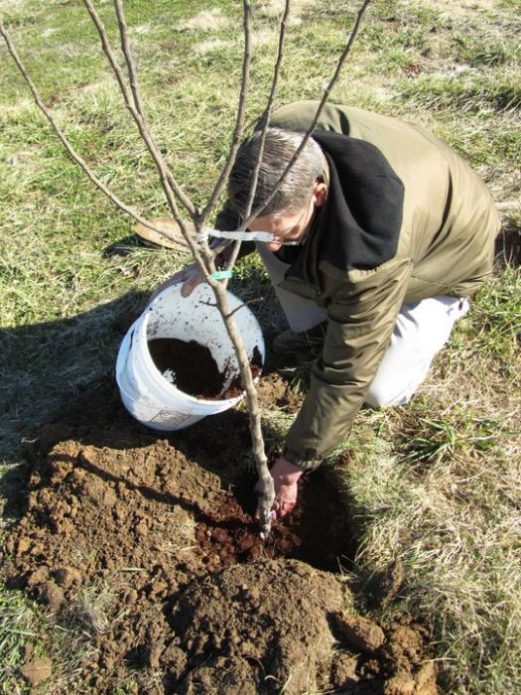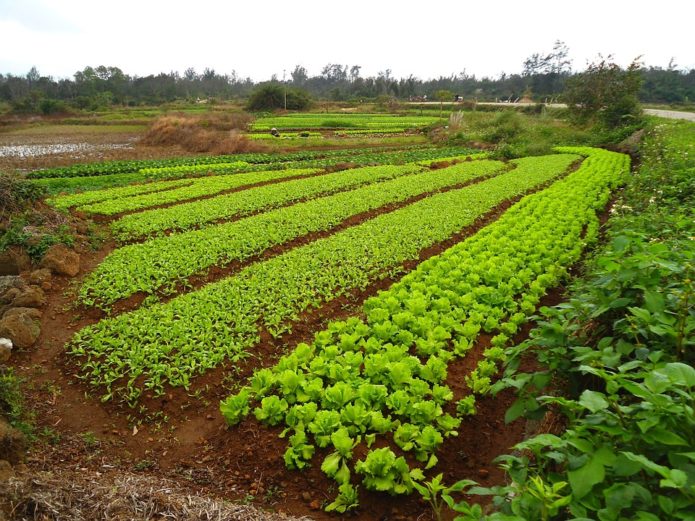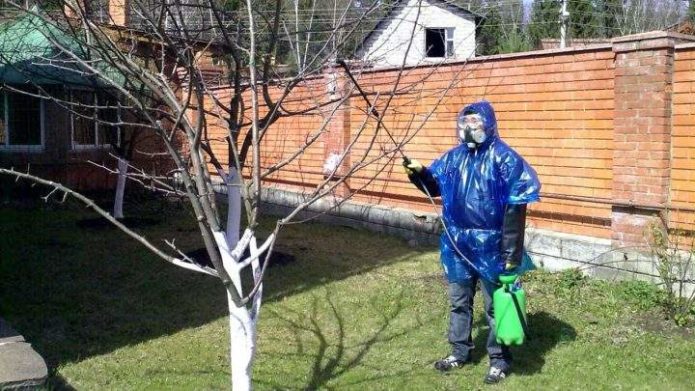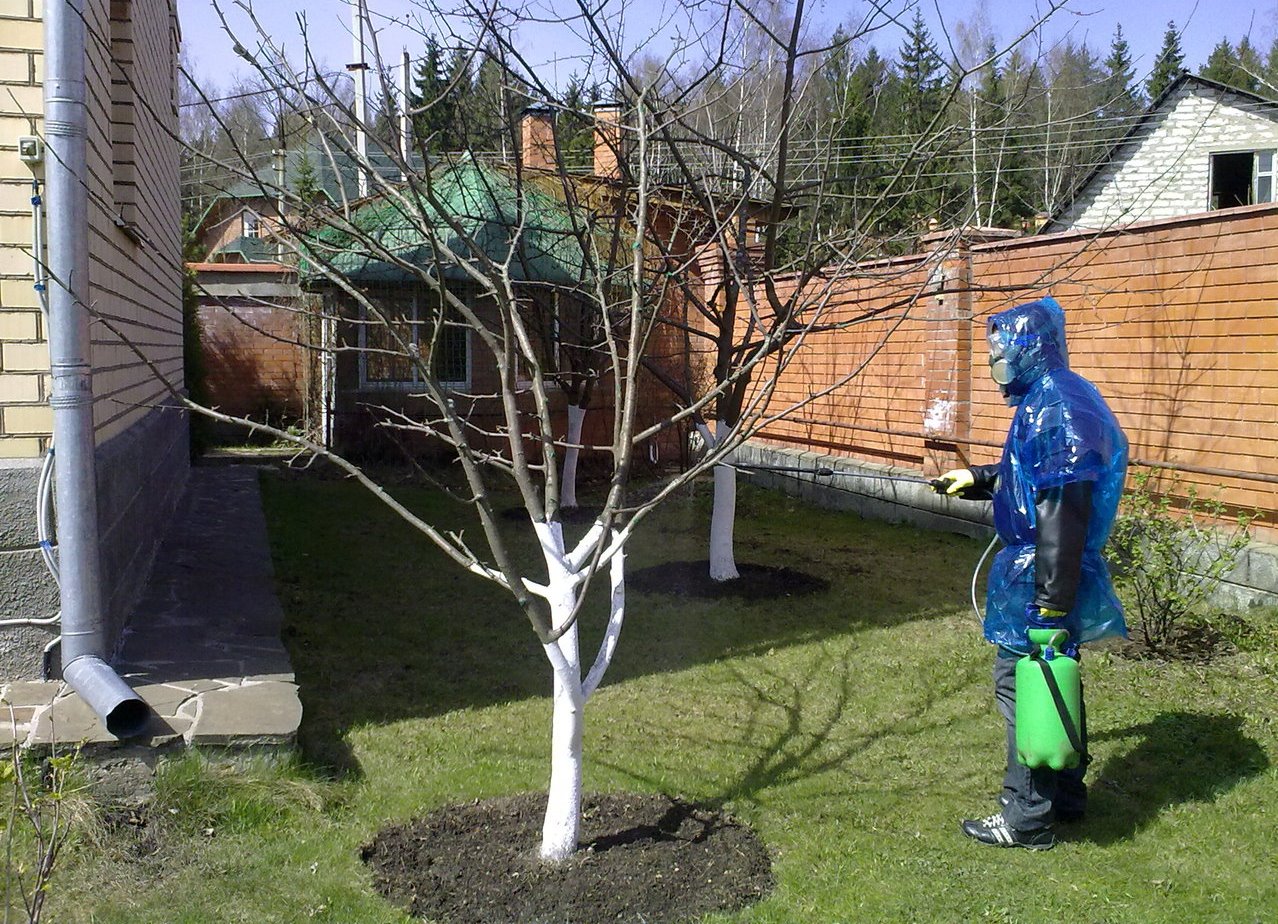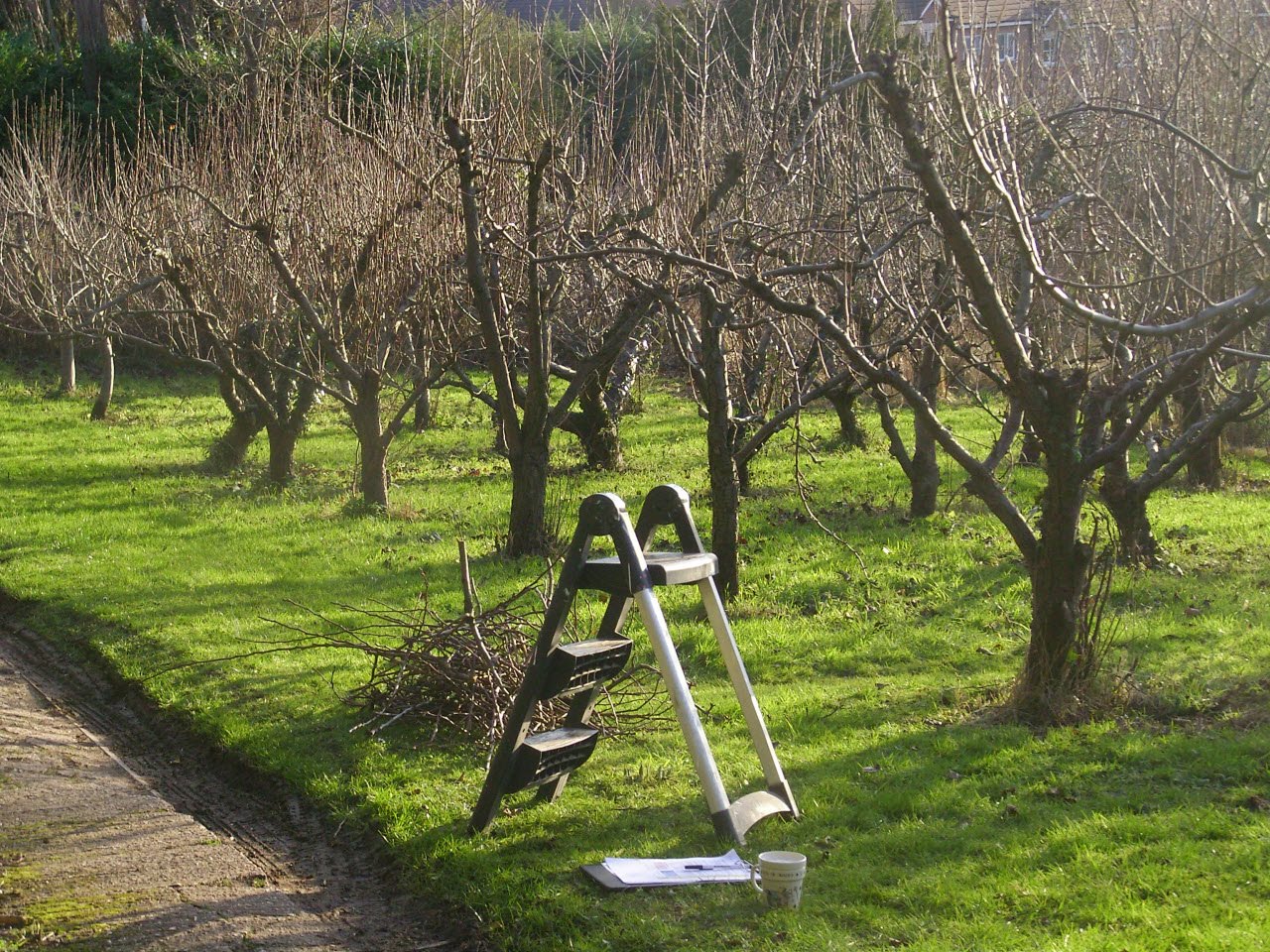Most trees grow in one place for many years, gradually drawing nutrients from the soil. Over time, they begin to be scarce, the plants fall ill, wither, and give meager yields. Top dressing of fruit trees in the fall is designed to solve this problem.
Content
Why do you need autumn tree feeding
A rich harvest depletes the supply of substances necessary for fruit trees for further growth and development. The missing microelements are replenished with the help of feeding during the preparation of the plants for winter, when the sap flow stops. Fertilizing helps trees survive the harsh season and prepare for the next growing season.
To strengthen the immune system of trees, they are provided with nitrogen, potassium and phosphorus. True, it is dangerous to add nitrogen before wintering: the trees will "think" that spring has come, many young shoots will appear, before the onset of cold weather they will not have time to become covered with wood and die.
It is especially important to feed trees such as:
- apricot;
- cherry;
- pear;
- peach;
- plum;
- cherries;
- Apple tree.
Experienced gardeners feed plums, cherry and apricot trees with superphosphate and potassium monophosphate: 15 g of top dressing per 10-liter bucket of water is enough to fertilize 1 sq. m of soil. With the dry method of embedding in the ground, 30 g of granules per 1 sq. m.
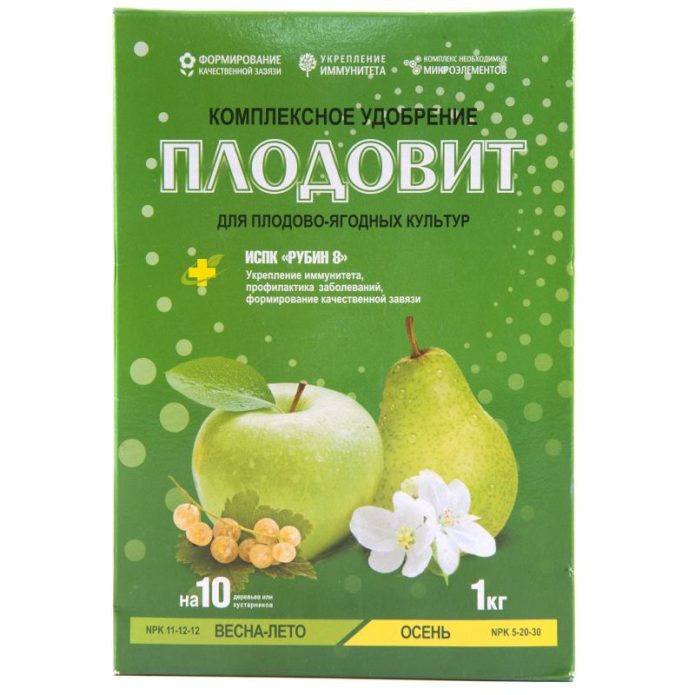
There are specialized fertilizers for fruit trees, for berry crops, for the whole garden marked "autumn"
Sawdust is introduced into heavy clay soil (preferably rotted, but fresh is also possible). So the soil becomes lighter, more breathable.
Some novice gardeners bury fallen leaves under the trees. However, they do not know that insect pests, larvae, microorganisms enter the soil along with it.
It is better to bury overripe healthy zucchini near the roots - you get a small compost pit.
How to feed garden crops depending on their age
It is recommended to use a different composition of autumn dressings for seedlings and older trees. The proportions will also differ. Some plants die due to nutrient overdose.
Small ditches are made around fruit trees 3-4 weeks before the coming frosts. For 1 sq. m of the root spread area is made by:
- potassium salt (1.5 matchbox);
- superphosphate (1/4 tbsp.);
- humus (5 kg).
It is especially useful to feed seedlings with wood ash in autumn. For fruit trees not older than 8 years, 3.5 buckets of humus with a volume of 10 liters are brought in, under older ones - 6 such buckets with a slide. Fertilizer is embedded to a depth while digging the earth.
During the autumn transplantation, fertilizers other than spring fertilizers are applied to the soil. Since it is undesirable to use nitrogen, it is better to concentrate on other nutrients. So, fresh manure is poured to the bottom of the pit and separated from the roots of the seedling by an interlayer of earth.But rotted is preferable. Used 5 buckets per pit. The manure is mixed with a substrate of peat or old compost, sand, original soil.
The rate of double superphosphate per 1 planting pit is 100-200 g; potassium sulfate - 150-300 g. Once every 3-4 years, you can use phosphate rock - a long-acting autumn dressing.
5 most popular fertilizing for fruit trees in the fall
Organic dressings increase yields, improve soil composition. Mineral supports the root system. It is best to combine both: this way the soil will be saturated with all the important trace elements necessary for wintering. The stores sell special mixtures for autumn feeding.
Wood ash
In autumn, it is important to improve the structure of the land on the garden plot. The earth is acidified with wood ash: 1/4 kg per 1 sq. m. There is no nitrogen in the top dressing, but there are easily digestible potassium, phosphorus and calcium. The ash contains a little boron, zinc, copper, iron, magnesium, manganese. These substances improve plant immunity.
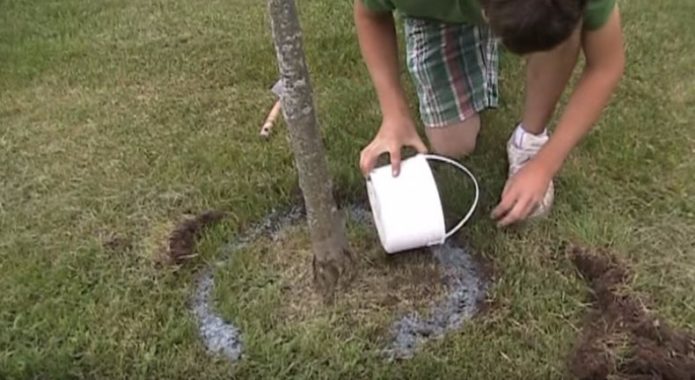
Ash is considered a natural source of phosphorus and potassium, the concentration of which varies from the original burnt material.
Before the September top dressing, generous watering of the soil is required. A lot of water is required: from 200 liters to 250 liters for each tree. The volume of liquid depends on the age of the plant and the size of its crown. For better moisture absorption, the earth is dug up near the trunk. Then ash fertilizer is applied (200 g per 1 sq. M), watered and mulched to reduce evaporation and heating the roots.
Ash is obtained by burning leaves, branches, unnecessary bark and stored in a place protected from moisture. The percentage of nutrients in organic feeding depends on the raw materials:
- The ash left over from burning vines, potato tops and sunflowers is rich in potassium (40%).
- Birch, ash, oak ash contains about 30% calcium.
- The fertilizer obtained from conifers and shrubs contains a lot of phosphorus.
Siderata
Modern gardeners have recently increasingly replaced manure with siderates (green fertilizers). Their nutritional value is the same, but they are much cheaper. And it's easier to use them.
Plants grown as autumn fertilizer are cut from the garden and placed under fruit trees in a layer of 15–20 cm. They are dug up with the soil and watered abundantly. For faster decay, mulch with straw.
Convenient when green fertilizers grow directly under the trees. Then, for the winter, green manure plants are not cut off - they themselves will die from frost, and by spring they will be partially decomposed by soil microorganisms.
Thanks to green manure and other organic fertilizing, the thickness of the fertile layer increases. Fertilizers fall into the ground, where they become food for soil bacteria and earthworms. With rainwater, nutrient residues reach the lower layers. There - after the food - microorganisms penetrate and leave the products of their vital activity there.
Potassium sulfate
Potassium sulfate (potassium sulfate) - feeding in the form of granules, which includes not only potassium (50%), but also sulfur (18%), oxygen, magnesium, calcium.
Potassium is necessary for the growth and development of garden plantings, for good fruiting. This trace element improves the immune defense and metabolism of plants at the cellular level, removes excess moisture, and the juice becomes thicker. During the autumn planting of seedlings, 150-200 g of potassium sulfate are required per planting pit.
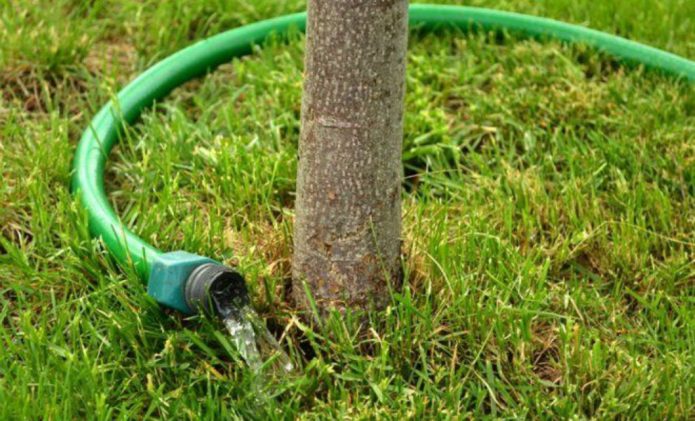
Pre-winter water charging will preserve the root system of the tree in severe frosts, exclude the possibility of sunburn of branches and bark
It is best to apply fertilizer while loosening the soil around the trunk: 30 g per 1 sq. m. It is desirable to close up the granules to the depth where most of the root system is located. Through it, trees absorb nutrients better.The heavier the soil, the greater the depth.
Superphosphate
Superphosphate is a mineral supplement. Usually applied together with potash fertilizers. This tandem is more effective than when the elements are applied separately. Phosphorus supports and strengthens the root system, helps cell sap to store proteins and sugars. Thanks to this, trees survive the cold more easily.
Apples and pears require 300 g of superphosphate and 200 g of potassium sulfate. Sometimes they are buried in the ground together with humus. But do not forget that phosphorus granules scattered on the ground will not get to the roots by themselves. Plums and cherries are generously watered with a solution: 3 tbsp. l. superphosphate and 2 tbsp. l. potassium sulfate per 10 liters of water. Each tree takes 4–5 buckets.
inkstone
For foliar feeding with a lack of iron in the soil, iron sulfate is used. In addition, it destroys fungal spores, moss and lichens on the bark. Wear protective clothing and goggles when handling poisonous substances.
Iron deficiency is calculated from the chlorosis of young leaves (a disease in which leaves turn pale yellow), while old leaves do not change color. To compensate for the lack of this element, 50 g of ferrous sulfate is diluted in 10 liters of water.
Video: autumn care for fruit trees
Fertilizing fruit trees before the onset of cold weather is extremely important. Saturation of the soil with useful substances helps garden crops to survive the winter. Each gardener chooses those fertilizers with which it is more convenient for him to work.

